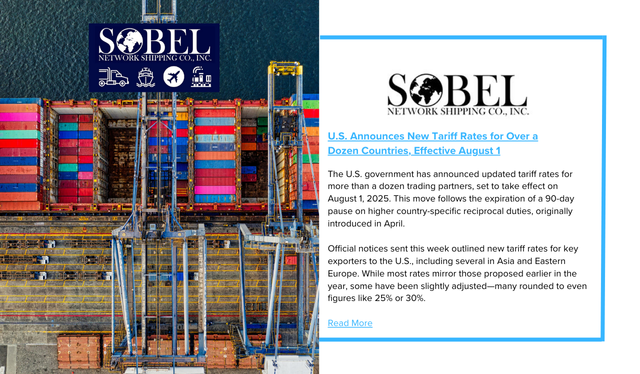The U.S. government has announced updated tariff rates for more than a dozen trading partners, set to take effect on August 1, 2025. This move follows the expiration of a 90-day pause on higher country-specific reciprocal duties, originally introduced in April.
Official notices sent this week outlined new tariff rates for key exporters to the U.S., including several in Asia and Eastern Europe. While most rates mirror those proposed earlier in the year, some have been slightly adjusted—many rounded to even figures like 25% or 30%. For example, one major exporter will now face 25% tariffs instead of the previously stated 24%. Other countries saw their expected rates lowered from earlier figures, though several—especially those with significant trade surpluses—maintained or saw increases in their tariffs.
The newly announced rates are distinct from existing sector-specific duties on items such as steel, autos, and electronics. They also exclude sectors currently under review, such as pharmaceuticals and copper, which are being evaluated under national security provisions.
While these tariff levels are now formally communicated, the letters sent to each country suggest that negotiations remain open. They offer the possibility for adjustments—either up or down—based on future trade concessions or improved market access for U.S. exports. The administration emphasized that the revised tariffs are a strategic tool to encourage more balanced and reciprocal trade.
Several top U.S. officials noted a recent uptick in interest from global trade partners, with many submitting new proposals following the release of the letters. According to the administration, the letters are both a final notice and an invitation to negotiate more favorable terms before the deadline.
Countries not engaged in active trade negotiations and those with lower overall trade volumes are expected to maintain the baseline 10% tariff rate. Meanwhile, larger exporting nations are under increased pressure to modify their existing trade barriers or face elevated duties starting August 1.
These developments represent a continued realignment of U.S. trade policy, with potential consequences for global supply chains, pricing, and bilateral trade flows. Importers and exporters are advised to prepare for the upcoming changes and monitor ongoing negotiations for any final updates.


